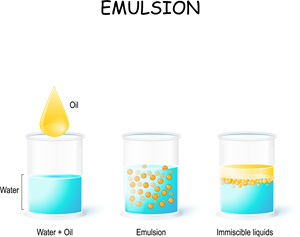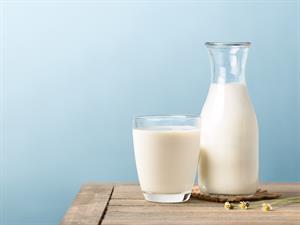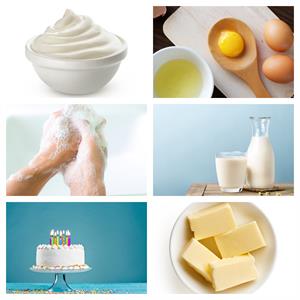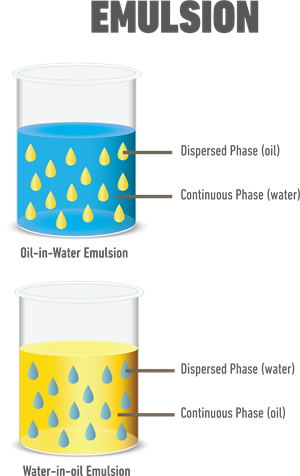
PUMPA - SMART LEARNING
எங்கள் ஆசிரியர்களுடன் 1-ஆன்-1 ஆலோசனை நேரத்தைப் பெறுங்கள். டாப்பர் ஆவதற்கு நாங்கள் பயிற்சி அளிப்போம்
Book Free DemoA mixture of two or more liquids in which one is present as microscopic or ultramicroscopic droplets scattered throughout the other is known as emulsions.

Emulsion
An emulsion is a colloid made up of two or more immiscible liquids in which one is dispersed in the other. This signifies that one sort of liquid particle is dispersed throughout another.
In other words, an emulsion is a unique form of mixture created by blending two liquids that ordinarily do not mix.

Milk
The word emulsion is derived from the Latin word 'emulgere', which means "to milk out" where 'ex' means"out" and 'mulgere' means "to milk" (milk is one example of an emulsion of fat and water).
Thus, emulsification is the process of turning a liquid mixture into an emulsion.
Example:

Emulsion and its classification
Milk, butter, cream, egg yolk, paints, cough syrups, face treatments, insecticides, and other products.
Types of emulsions:
When the two liquids are combined, they generate a variety of emulsions.
For example, let us take oil and water. In the case of oil in water, emulsion (O/W-e.g. cream) with oil droplets dispersed in water, whereas for water in oil, emulsion (W/O-e.g. butter) with water scattered in oil.

Variety of emulsions
Emulsions are used in various sectors, including food processing, pharmaceuticals, metallurgy, and many more.